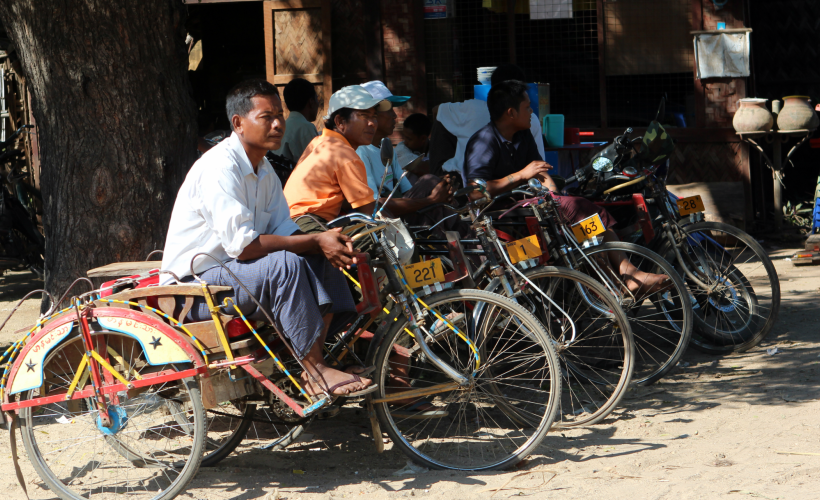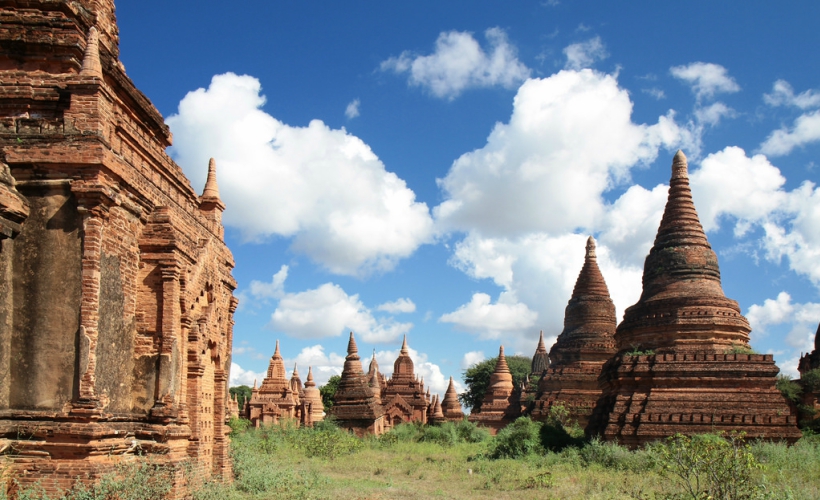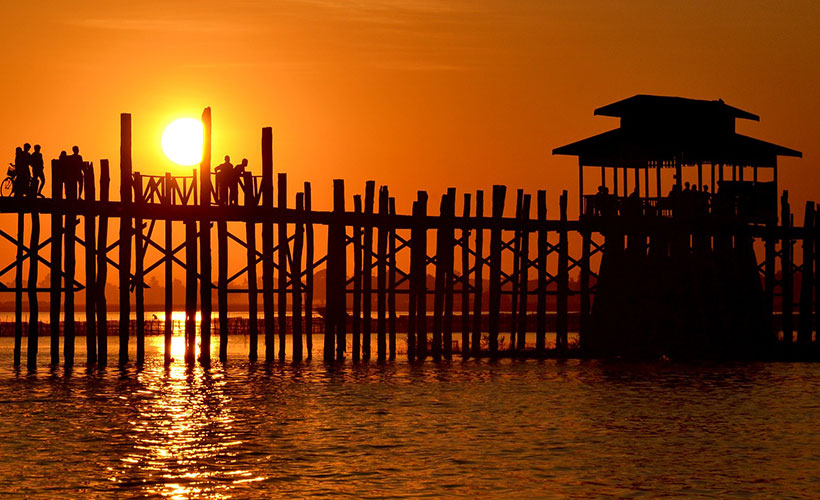
At first glance, the U Bein Bridge may seem unimpressive. But delve into its history and you’ll understand why it’s one of Myanmar’s most iconic landmarks. U Bein Bridge crosses the Taungthaman Lake near Amarapura in Myanmar. It’s a simple structure with teakwood pillars supporting its teakwood decks. There aren’t any picturesque arches or fancy architecture, no elaborate carvings or religious structures. So, what makes this bridge a popular tourist attraction?
Construction on the U Bein Bridge was completed in 1851. What makes this bridge quite remarkable is that it’s nearly 1.2 kilometres long and made entirely out of teakwood. The bridge was constructed by hammering over a thousand (1,086 to be exact) thick, wooden pillars into the bottom of the lake. Teak planks were laid upon the supporting structure to form the walkway.
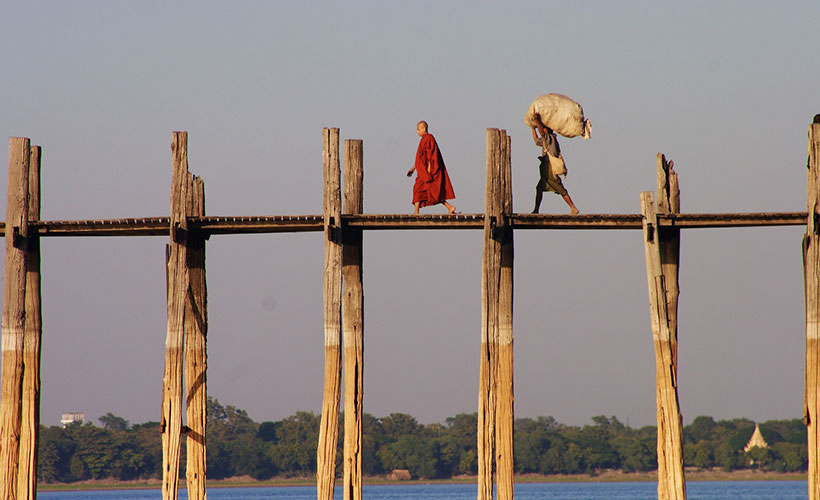
It’s important to note that the teak planks used weren’t just harvested down the road, no. These planks came from the royal palace of Inwa. The local mayor, named U Bein, called for the construction of the bridge in order to shorten the time people spent walking back and forth between the village and the monastic school. So the teakwood was salvaged from the royal palace when Kind Mindon decided to move the capital from Amarapura to Mandalay, taking the palace with him.
Sometimes, the most epic travel tales feature the most unassuming of places
An Overland Adventure From Singapore To Myanmar
Life at the lake
The water level of Taungthaman Lake changes drastically with the seasons. During the dry season, some of the ground underneath the bridge is quite dry, to the point that some locals even plant vegetable gardens. After the summer rains, the lake fills up, and the water level rises nearly to the floor planks.
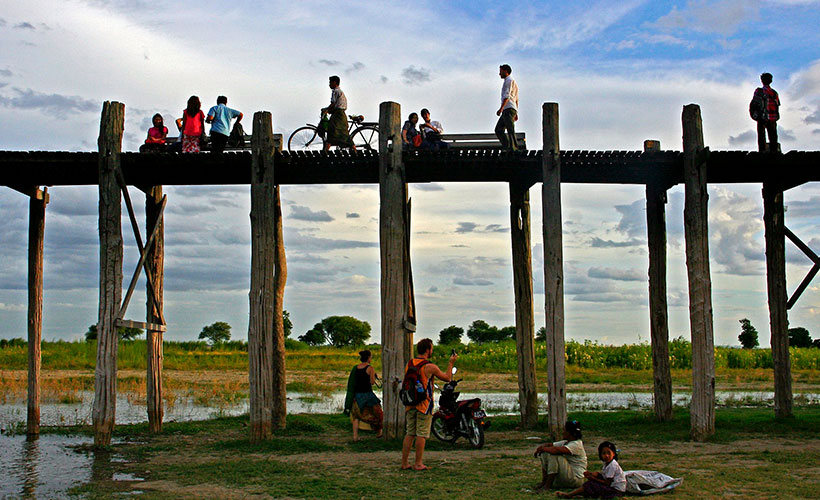
Since its inception almost 200 years ago, the bridge has been used daily by local people and has become a popular tourist attraction. This, along with its age, has required some restoration to be done to the bridge. As a result, a few of the pillars have been replaced by concrete supports.
Pretty as a picture
Even with reparations (and in its simplicity), U Bein Bridge is still very photogenic – some even say it’s one of the most photographed sites in Myanmar. Sunset and sunrise are busy times on the U Bein Bridge, with villagers and monks making their daily commutes amongst tourists keen to take photographs. So here’s a tip: there are far fewer tourists around during sunrise. The changing of the light and the bridge’s aged and ancient feel with the perfect reflections created in the water below create striking images.
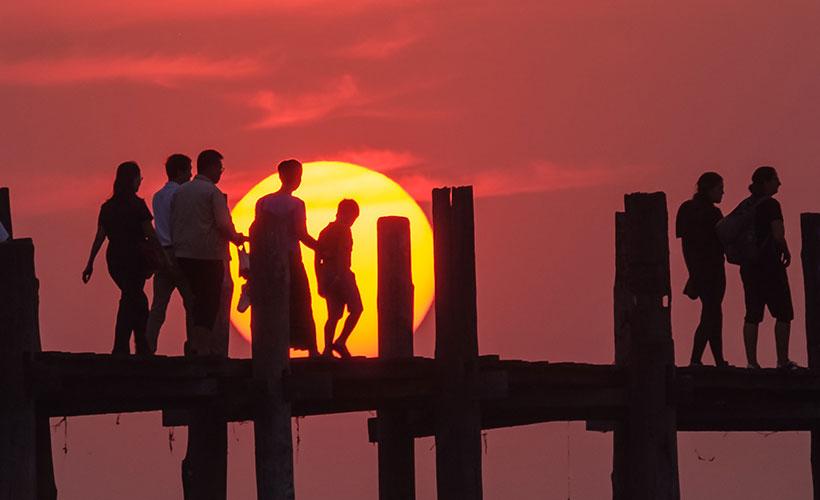
Finally, getting here isn’t difficult. U Bein Bridge is about 11 kilometres from Mandalay. For the best views, you can rent a boat (this is quite popular so ask your hotel or tour guide to book one in advance) and watch the sunrise or sunset from the middle of the lake. A number of tea shops along Taungthaman Lake also provide visitors with some spectacular views along with snacks or a drink. Tourism is growing in the area, but it’s still not very commercial, leaving one feeling like you’ve just wandered off the beaten path and experienced something authentic.
The U Bein Bridge is a symbol of Myanmar’s history that plays a central role in the lives of present-day Myanmars. It’s a combination of the ancient with the new in a way that is as striking to the soul as it is to the senses.

